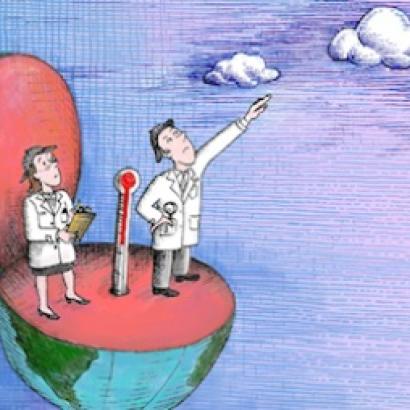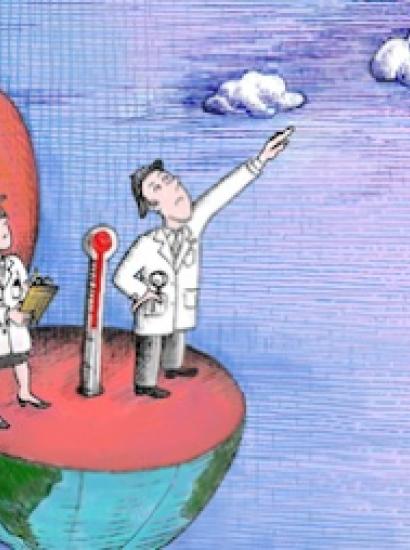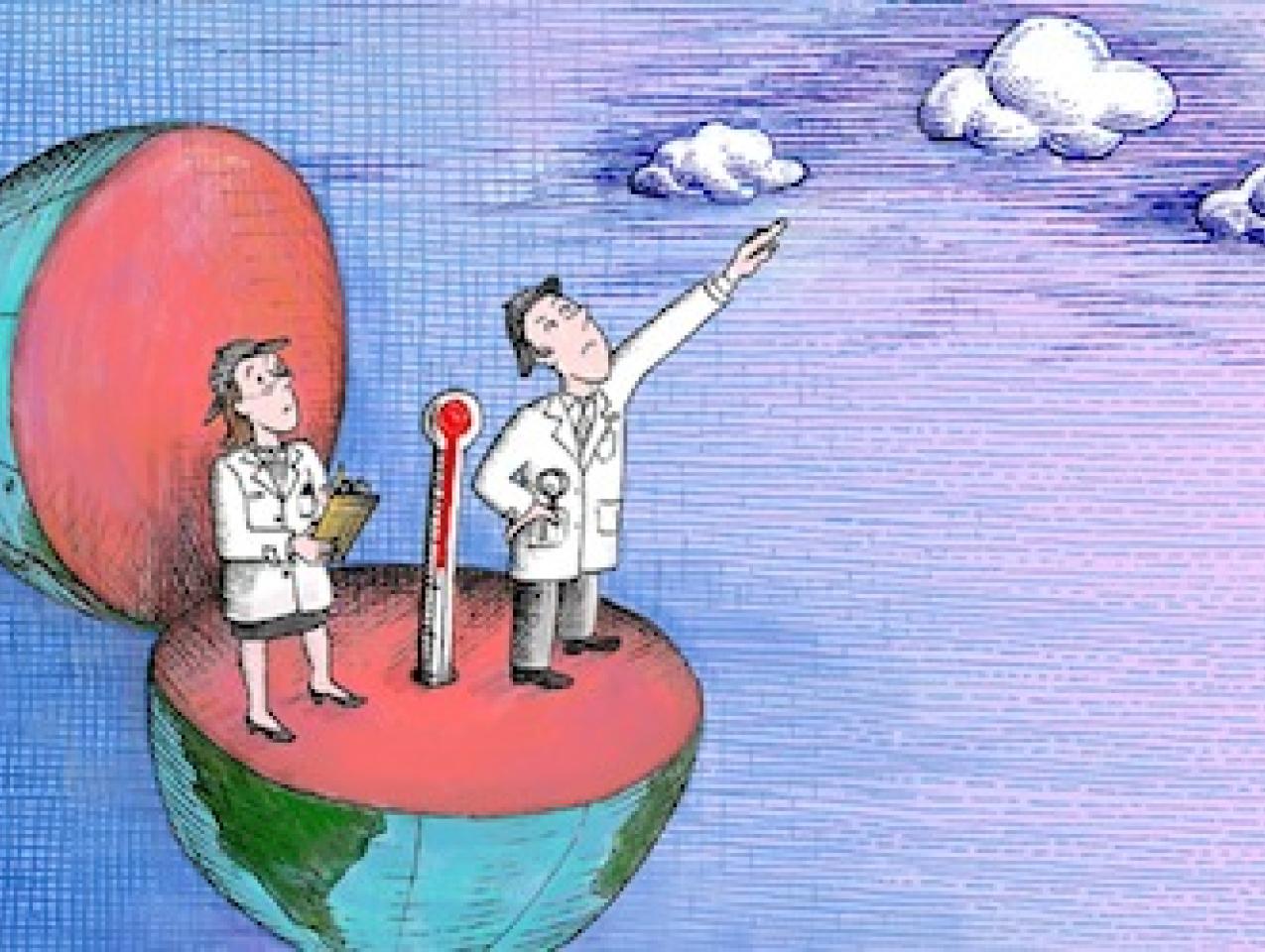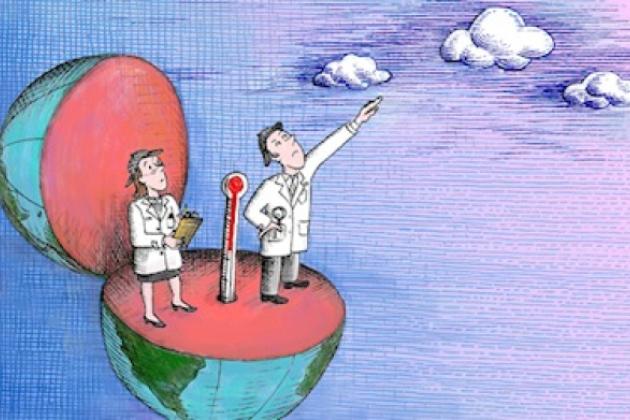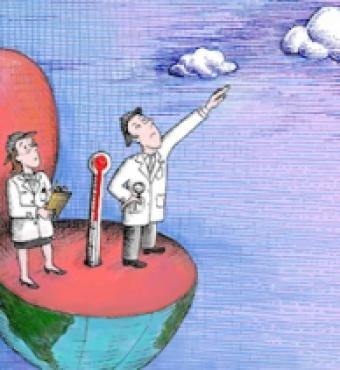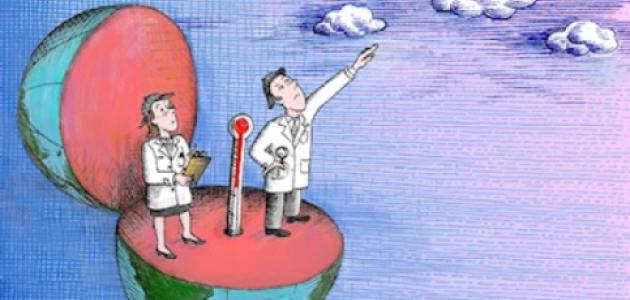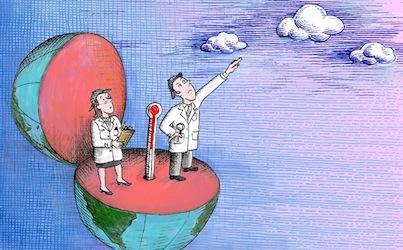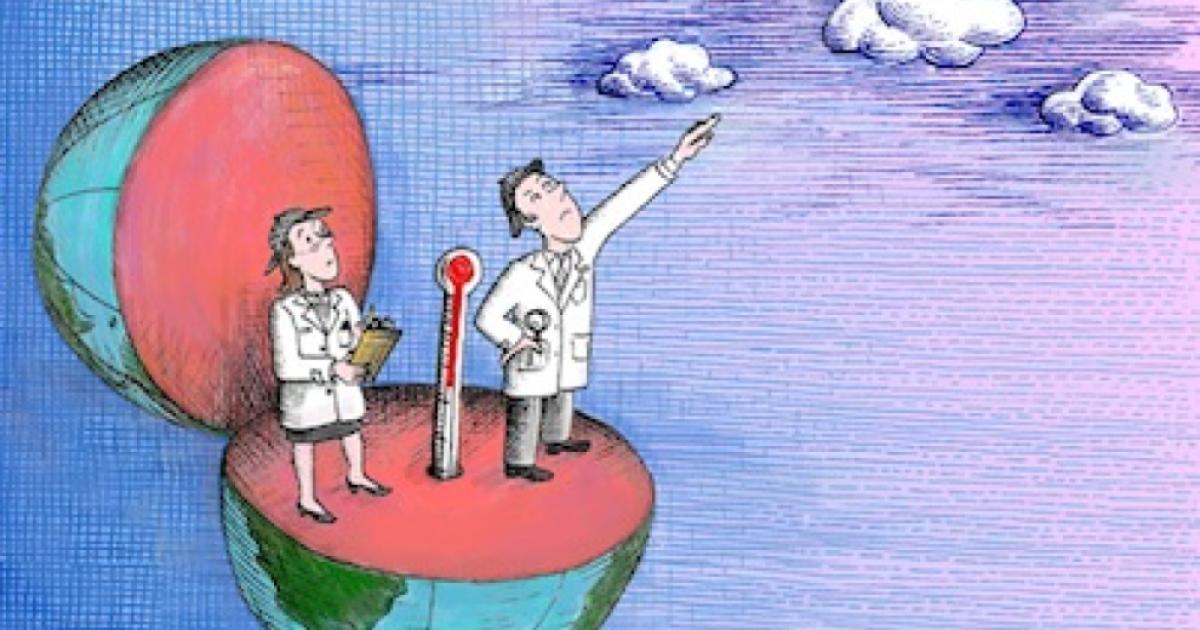- Economics
- Energy & Environment
- Politics, Institutions, and Public Opinion
- Regulation & Property Rights
- Law & Policy
Has the earth been warming over the last century? Yes. By most indications, the earth has been warming and the atmosphere is about 0.8 degrees Celsius warmer than it was 100 years ago. Has the earth been warming over the last decade? There is contradictory evidence here. Arctic ice is shrinking but Antarctic ice is growing. The National Oceanic and Atmospheric Administration (NOAA) reports that 2012 is shaping up to be the warmest year on record for the United States. On the other hand, the Hadley Centre and the Climatic Research Unit (CRU) in Britain “find essentially no upward trend in global average temperatures since 1997.” Has the earth been warming over the long-term? No. In fact, over the past two thousand years the earth has been following a slight cooling trend of -0.3 degrees Celsius per millennium.
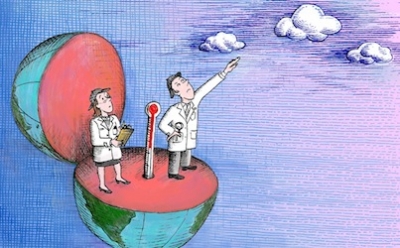
Photo credit: Austen Hufford
So the answer to the question of whether the world is experiencing global warming is yes, no, and maybe. The voice of the “scientific consensus” is outspoken and unambiguous about this issue and has been intimidating skeptics and censuring the rest of us for not encouraging our governments to immediately and severely restrict carbon emissions. However, the “scientific consensus” is premature in its dire predictions and in implicating human activity in global warming.
The reality is that the climate change mystery is far from solved. This is partly because current climate models are deficient, but primarily because the data are being reviewed and reevaluated. The cause of climate change is the great whodunit of our age and climate scientists have not made a convincing case that anthropogenic carbon emissions are causing dangerous warming trends.
The Mystery of Clouds
Climate models have failed to capture the incredible complexity of our blue planet’s climate. The earth’s climate is a mind-bogglingly complicated matter that might be driven by any number of factors in unintuitive ways. To model complex situations, modelers at least need to include the key drivers. Clouds should be included because, as we know, clouds both reflect incoming and trap outgoing radiation. However, climate models either ignore clouds or handle them simplistically because clouds and cloud formation are not well understood. If the world really heats up, will there be more or less cloud cover? Does the climate drive clouds or do clouds drive the climate? It turns out that scientists don’t know and it’s hard to model something you don’t understand.
It now appears that clouds are at least partially formed via deep space cosmic rays hitting the earth’s atmosphere and these cosmic rays are affected by the amount of radiant energy put out by our sun. The sun acts like a magnetic shield and when the sun’s energy output is higher, as it has been during the twentieth century, fewer cosmic rays hit our atmosphere, fewer clouds are formed, and the earth heats up.
A final realization about clouds is even more bizarre. New research shows that clouds are an ecosystem and their living microbes might influence much of the world’s weather. You might be surprised to discover just how impossibly hard it is to make even a single raindrop or snow flake. The scientists working on this topic admit that “we really don’t understand why some clouds drop rain and others don’t.”
Scientists do know that for clouds to produce precipitation, the cloud droplets must form ice crystals. Yet many clouds, even ones that are at -30 degrees Celsius—far below the freezing point of water—produce few if any ice crystals. Clearly, water vapor needs something more than just low temperatures to form ice, and that secret ingredient is a speck at the heart of each ice crystal that aligns the water molecules in a precise fashion. Those specks can be dust, but they are frequently microbes. In fact, clouds are so full of living bacteria, algae, and fungi that each contains its own ecosystem.
It is really amazing that clouds produce any precipitation at all because only about one in a million of these microscopic specks has the right geometry to organize, on its surface and into a hexagonal pattern, the requisite 100,000 water molecules needed to spawn an ice crystal. It turns out that organic particles, such as bacteria, do the best job of organizing water molecules in such a precise manner.
Kimberly Prather, an atmospheric chemist at the University of California, San Diego, told Discover Magazine, “When I look at what physically forms the ice in clouds, I’d say 80 percent of it has some sort of biological signature. The dust by itself doesn’t explain it.” According to Gary Franc at the University of Wyoming in Laramie, “There’s a whole ecosystem going on in the clouds that’s largely undefined.” It is going to take scientists some time to grasp, let alone study, the fact that the presence of bacteria in clouds “adds one more twist to the already convoluted connection between human activity, weather, and climate.”
The Problem With Climate Models
Do climate models capture cosmic rays, cloud formation, and microbes at 30,000 feet? Certainly not. Climate models are fundamentally deficient for not capturing all the moving parts of our incredibly complex climate.
In recent years, the data that go into the models have undergone further scrutiny and review. Teams of scientists have been using proxy data to construct histories of earth’s temperatures as far back as the Roman times. Scientists can do this using samples of lake sediments and fossilized trees that show wide (warm) and narrow (cool) tree ring growths, among other things. The early results were popularized by climate scientists Michael Mann, Raymond Bradley, and Malcolm Hughes in 1998, when they showed our current period to be unusually warm. It seemed like a natural step to associate the current warm period with the dramatic increase in anthropogenic carbon emissions—which are known as greenhouse gases—and point to a smoking gun. It also seemed to follow that these carbon emissions should be curtailed, if possible.
However, it would be prudent to reevaluate those data. This has now happened. Many published papers have reconstructed the earth’s historical temperatures using things like lake sediments and tree rings from around the world. Before we discuss those results, consider the significance of the Vikings in Greenland.
The Case of Greenland’s Vikings
Erik the Red, the legendary Viking, was exiled from Iceland and sailed to Greenland in 982 AD, where he found birch trees and hills blanketed in green grass. From 985 to 1408, the Vikings had vibrant farming settlements on Greenland. However, if you go there today, you won’t see any farms or even any Viking kids running around; you will see ruins. Why did the Vikings leave Greenland? It turns out that the Viking settlements coincided with the Medieval Warm Period and ended with the Little Ice Age, which caused the Vikings to leave Greenland’s deteriorating fields.
If the Vikings were able to farm Greenland a thousand years ago but would not be able to today, we can assume that the Medieval Warm Period was warmer than the climate today. The scientific studies support this conclusion. Over 120 published studies have formed a conclusion about the Medieval Warm Period: approximately 10 of those studies say it was cooler than today, 20 say it was equal to today, and 90 say it was warmer than today. Of the 110 studies that quantified their results, the conclusion was that the Medieval Warm Period was, on average, about 0.5 degrees Celsius warmer than today.
With these results, today’s warm temperatures can be seen in the context of regular, long-term fluctuations of earth’s temperatures. More importantly, these results appear to exonerate carbon dioxide emissions. During medieval times, the human population was just six percent of its current level and industrialization would not occur for almost a millennium. Sure, there was some clearing of forests and burning of wood, but those actions did not alter the carbon emissions needle, and the level of atmospheric carbon dioxide was low, unlike today, when it is higher than at any time during the past 800,000 years. And yet, somehow, the temperatures during the Medieval Warm Period were warmer than they are today. Something else must be driving changes in the climate because anthropogenic carbon emissions were not a factor when temperatures reached a peak hundreds of years ago.
Climate models assume that atmospheric carbon emissions and other natural events directly and causally determine changes in earth’s climate. However, if we allow that some other variable might be causing the climate to change or if carbon dioxide levels are a result of, rather than the cause of, climate change, then the current climate models are critically deficient and our mystery remains unsolved.
Perhaps the earth would have cooled even more had carbon emissions not slowed or reversed the long-term cooling trend. Perhaps the real warming is just starting in earnest. While more research is needed, it is becoming clearer that there is no need to panic and there is no need to put a severe strain on the global economy by drastically restricting carbon emissions. Our planet is in the middle of a warm period, but people should learn to chill out.








